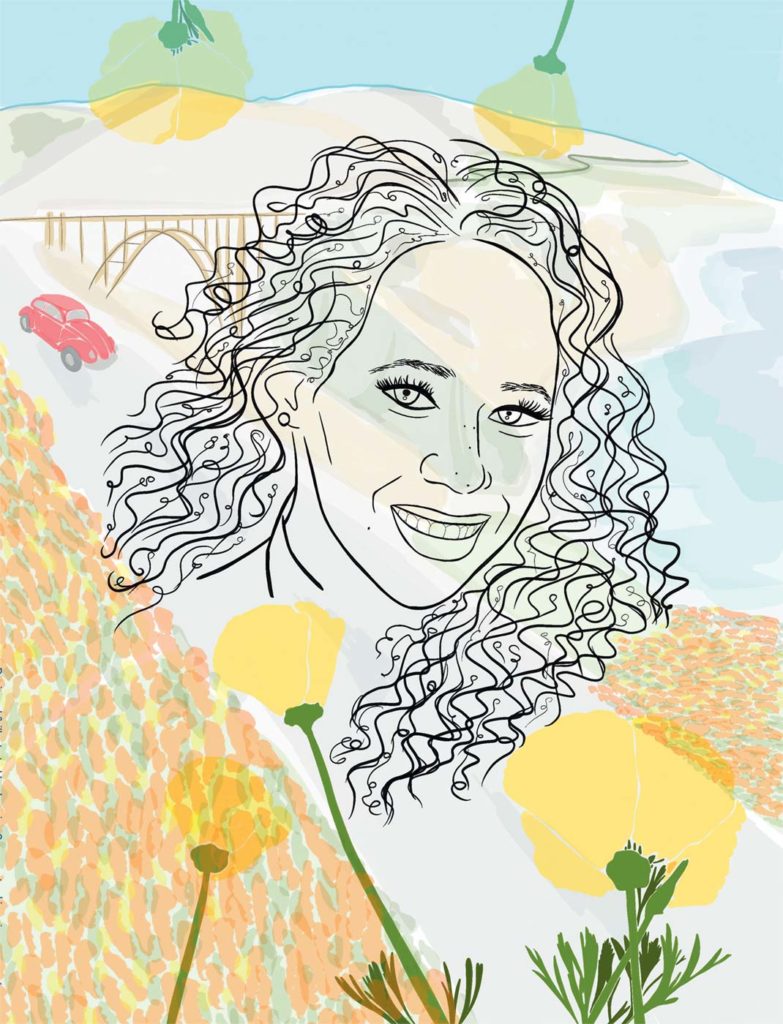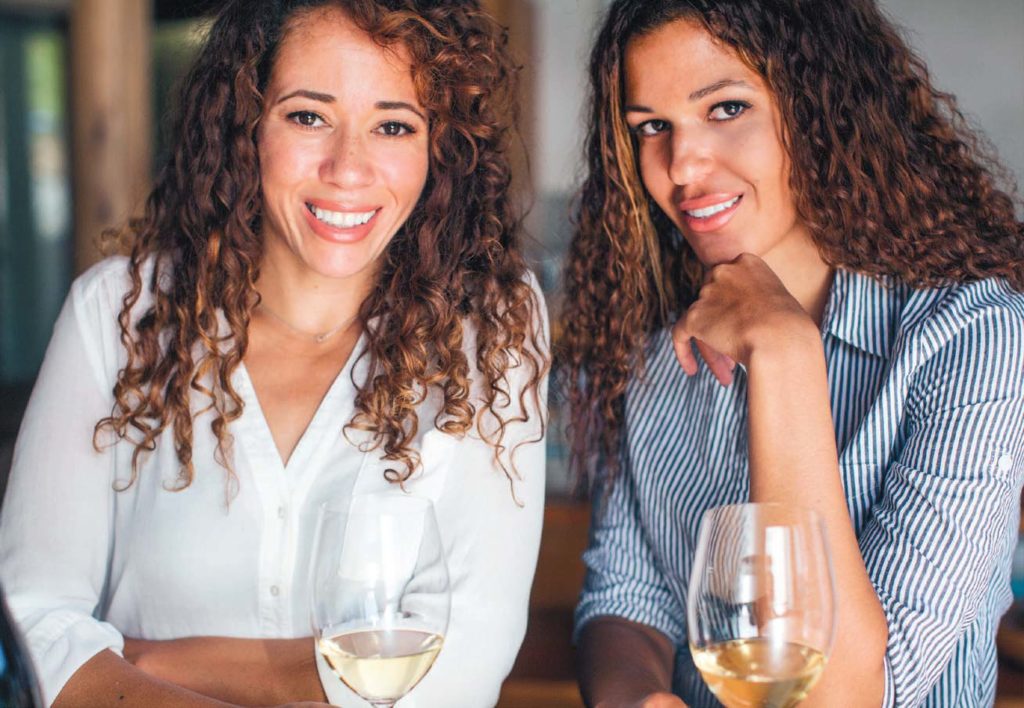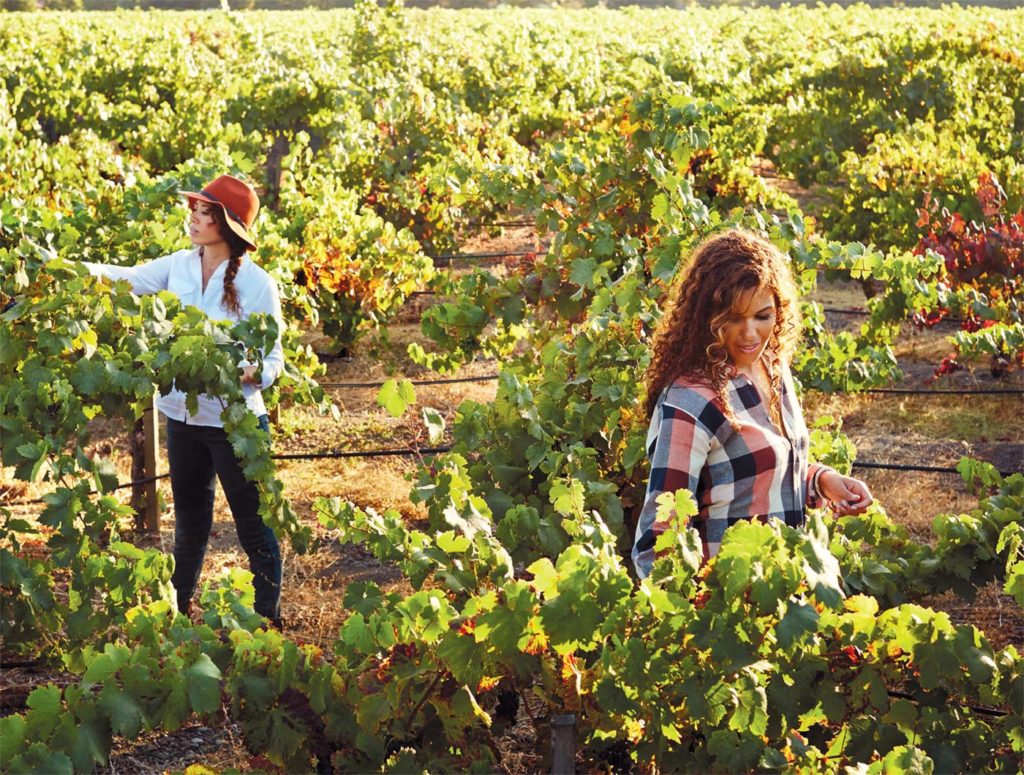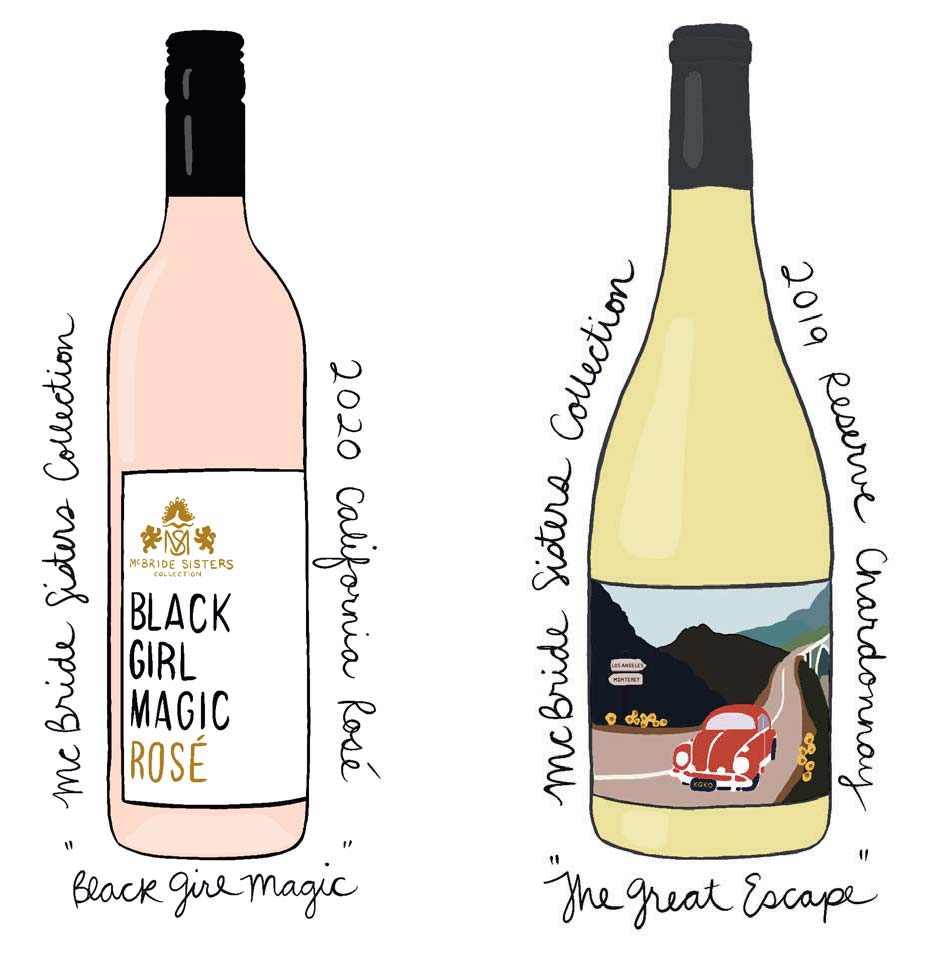ILLUSTRATIONS BY JASMINE SENAVERATNA

Vintner Robin McBride shares childhood memories of Monterey, Black Girl Magic and other pivotal moments behind McBride Sisters—the wine company she and sister Andréa built from their bond and determination.
Long before she and her sister launched a national wine company, Robin McBride’s interest in wine was sparked at a young age—in Monterey.
“As a little kid, I tried to make wine under my bed,” she says with a laugh. “I learned wine was made from grapes, and grapes were made into grape juice and fermented. And I felt I could do that for sure. I had baby bottles from my dolls and would take Welch’s grape juice and put it in these bottles. And I’d put them in a cool dark place, under my bed and wait for them to turn into wine…until my mom discovered it, and asked, ‘What is this stuff cooking under your bed?’ I said, ‘Hey! Leave my wine cellar alone, I’m making wine over here.’ And she said, ‘Okay, girl, do you, I guess. Just don’t make a mess on the floor.’”
Now grown up with kids of her own and living in Oakland, Robin is planning a nostalgic birthday trip around Monterey this fall for her 17-year-old twins. Stops include the Monterey Bay Aquarium and Red’s Donuts, a childhood favorite.
Robin talked with us about growing up in Monterey, her more serious beginnings in wine and the business she and her sister Andréa launched 16 years ago.
Walk us through your early memories of Monterey.
My mom moved from Los Angeles with me before I was two years old. Way back in the ’70s, she was in a Volkswagen Bug, driving up Highway 1, and we stayed overnight in Pacific Grove, in a little bungalow on Lighthouse.
Contemplating what was ahead for her, she decided to stay an extra day, took a look around…and ultimately decided Old Monterey was it. This was our spot. We lived in one house until I was 13, and then moved across the street. She’s been in that place for 30 years.

What was childhood like in 1970s monterey?
It was just me and her. It was kind of unique, because in the ‘70s, when I was a little girl, there was a lot of freedom. I spent a lot of my childhood out in that neighborhood, in little forests and streams, being in my head, so I was kind of a weird kid.
I went to all the schools in Monterey; I was a smart kid, I skipped grades…everything was just awkward. I tested out [of high school] when I was 15, and I loved science, so I went to MPC. I ended up working [one summer] when I was 16 at a company still there called Sierra Instruments. I would spend all day talking with the engineers, just learning about anything that piqued my interest.
My first career goal when I was five was to be a flower farmer— Monterey being very heavily rooted in agriculture, fishing, hospitality, restaurants, tourism and wine. I’ve always had this fascination with the process of growing things, making things, feeding people and the experience.
While I was geeking out being this manufacturing nerd, I started my own journey as a wine drinker, learning more about wine.
It wasn’t until early adulthood that you learned you had a younger half-sister who had been raised in New Zealand. What was that like?
Andréa and I met, and then I understood where she comes from is very similar [to Monterey]. She had a similar experience being in New Zealand’s agriculture and wine country. And we were like, “That’s crazy!”

You unite, you have this wine connection. Is there an aha moment?
Andréa was going to USC. Monterey to L.A. is a bit of a haul, so we met in the middle. We ended up picking places in wine country. We were getting to know each other and learning about our pasts with this whole backdrop of wine. It became important to us and an important part of our relationship.
Unfortunately, our experiences weren’t always the best—going to places and not getting served, taking forever to get someone’s attention or to get seated. We just wanted to talk about sister stuff and drink some wine. And we thought, what if a Black woman had a winery or if we had a winery?
Then there’s a defining moment. She’s an athlete and a junior in college, gets an injury and she’s out. At the time I just had the twins and there was no way to go back to corporate America. It’s not a natural place for me; I like to be creative.
We’re looking at each other, [thinking] what are we going to do here? However, when we started looking into winemaking, wine is a very expensive business. It takes a lot of capital and a lot of time and a lot of land and facilities—none of which we had, including the money. So what are we gonna do about that? Andréa’s uncle is a grape grower in New Zealand and we thought maybe we could start bringing over some of these wines from the small family-owned wineries where she grew up. So we start introducing folks to these amazing wines at a time when New Zealand wines were becoming popular [circa 2005]. There’s a lot of trial and error, and we had those experiences and learned from them.
I am process driven; I love the growing side of things; the winemaking side; the processes down to our packaging, finished goods, inventories, moving it around the country—that’s where I naturally sit. My sister is obsessed with marketing and sales.
We are the siblings that each of us always wished we had. When we found each other, we were so honored to have each other. This respect for our relationship as sisters, above everything else, is such a big part of why our business works.

How did Black Girl Magic wines evolve?
In 2018, New Orleans had selected the first Black woman mayor and we were invited to participate in the Essence Festival at the mayor’s opening party. We had never been to Essence Festival before. We love New Orleans, [and thought], this is amazing! We’re going to bottle some special stuff and call it Black Girl Magic as a celebration. The Black Girl Magic brand was created to be celebratory for a specific event.
In early 2020, we made the decision to distribute Black Girl Magic wines across the country—[an off-dry riesling, a rosé and a red blend from California]. But distributors were not seeing the opportunity, understanding the community, the brand, who would buy it.
Then we have a social justice movement and a lot of national accounts met with demands for the product. We saw consumers having a voice and demanding access to Black-owned brands, [saying to retailers], “These are the products we want to see on shelves.”
We were already ready. This wine wasn’t made in response to what was going on; we already had it in creation. It’s one of a hundred times where we bet on ourselves.
What wines are you excited about right now?
We just launched our first two reserve wines, which are Santa Lucia Highlands wines, a chardonnay and a pinot noir.
Our chardonnay label depicts the story about my mom in her VW Bug, going from L.A. to Monterey. It’s called The Great Escape. It’s Big Sur, Bixby Bridge, California poppies, her Bug. It has her initials on the license plate, and the sign shows L.A. behind her and Monterey ahead.
The Great Escape is also our version of escaping traditional California chardonnay. Showcasing the place where the grapes are grown [Escolle Vineyard] and the environment, with beautiful acidity, bright citrus notes and cooler climate fruit, pear, apple and beautiful minerality. It tastes like Monterey to me.
About the author
Jasmine Senaveratna is a food and wine enthusiast, restaurant service director, and freelance writer and illustrator. She is inspired by food as culture, experience and personal story. Find more of her work at jasminesenaveratna.com.
- This author does not have any more posts.


